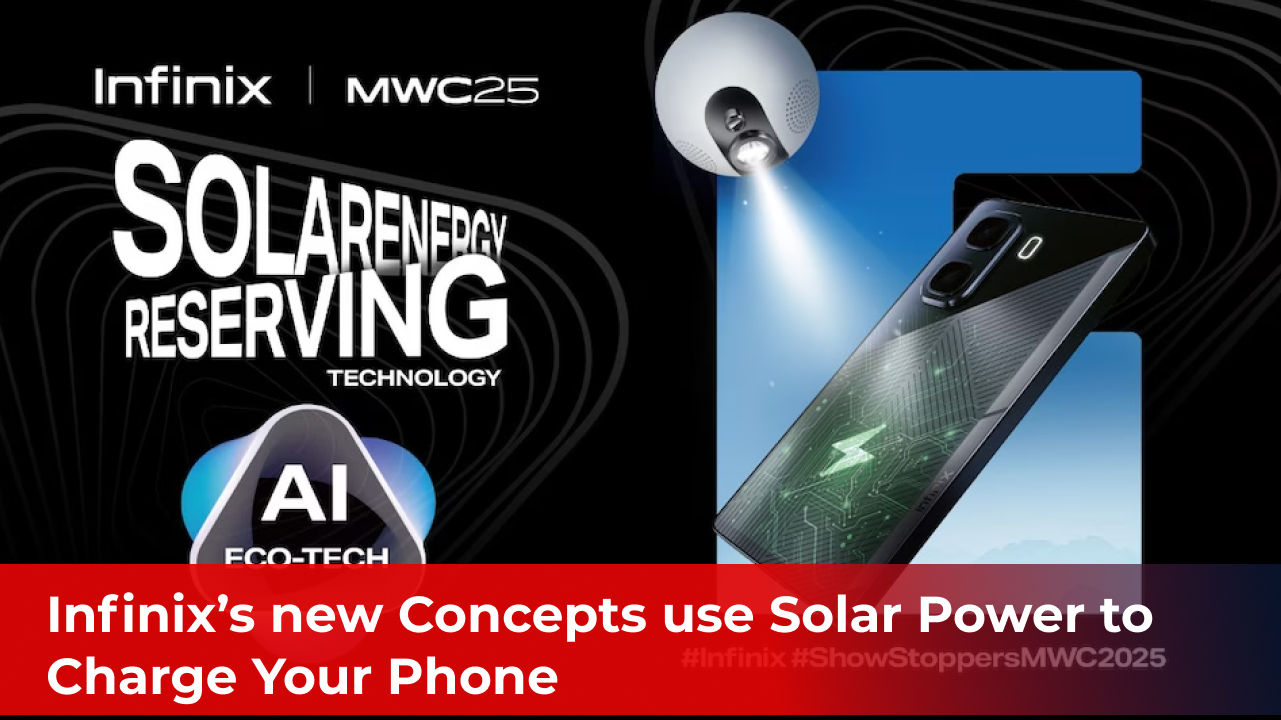Barcelona, Spain- March 4, 2025- Infinix, the Chinese smartphone manufacturer famous for its affordability and innovation, has made a giant leap into sustainable tech at the Mobile World Congress (MWC) 2025. On March 2, the company revealed two sticking concepts- a smartphone with an integrated solar panel and a solar-powered charging case. These working prototypes charge their devices utilizing solar energy providing one with an image of the envisaged future when phones can reduce their reliance on conventional power sources. Though not available commercially, this daring showcase from Infinix translates into one thing: the arrival of green mobile solutions.

Infinix calls its solar-powered smartphone "SolarEnergy-Reserving Technology", using perovskite solar cells, a new generation of solar cells that serves as an excellent alternative to silicon-based panels. Being thin, easily manufactured, and with a good energy conversion rate, perovskite solar cells have been recognized for potential applications in space-restricted product systems such as smartphones. The solar energy harvesting system is integrated with a maximum power point tracking (MPPT) algorithm for the power generation optimization and get management- an important factor for a phone when subjected to sunlight. It is harvesting up to 2 W of power presently. This Power output is certainly not enough for charging a phone but can help keep the battery alive significantly; thus, it can be a good bet in situations like camping, power interruptions, or regions lacking access to electricity.
This phone is powered by solar energy, having a sleek design with a solar panel on its back to capture direct sunlight and ambient indoor light to trickle charge the battery throughout the day. The solar charging case has a modular aspect. It connects to a prototype phone via side contacts, allowing users to substitute it with a standard case when solar power isn't required. This, therefore, creates ideal charging situations. Infinix emphasized that this technology could have applications beyond smartphones into power wearables, tablets, and possibly some other small electronics, which is part of the global push towards sustainable technology.
Beside utility and beyond the call line, Infinix revealed the second iteration of its E-Color Shift phone, which is an AI-based conceptualization where the color and graphics of a back panel copy the user's choice, photographs, weather, or even music. This version gets power through its battery rather than an external charger like the previous version, which made it possible for electrochromic variations. It boasts rather playful yet energy-efficient options for customizing the phone. This is less of a practical thing, but it goes to show that Infinix knows how to combine fun with function.
The rise in consumer demand for greener devices and growing scrutiny of tech's environmental footprint inform these concepts. Infinix suggests that its solar technologies may make an appearance in the upcoming NOTE 50 series, which will be available later this month and equipped with more AI functionality at MWC under simulated sunlight. This is proof that they are much more than a gimmick.
Industry analysts believe that Infinix stands for a trend; companies are looking to renewable energy to differentiate themselves from competition in an already-croweded market.
Should the technology reach full potential, it will not only lessen e-waste due to charger and cable disposal but also appeal to the eco-customer. For now, however, an Infinix solar-powered dream casts a light on the road to greener innovation in mobile technology, one that may soon see optional plugging.
